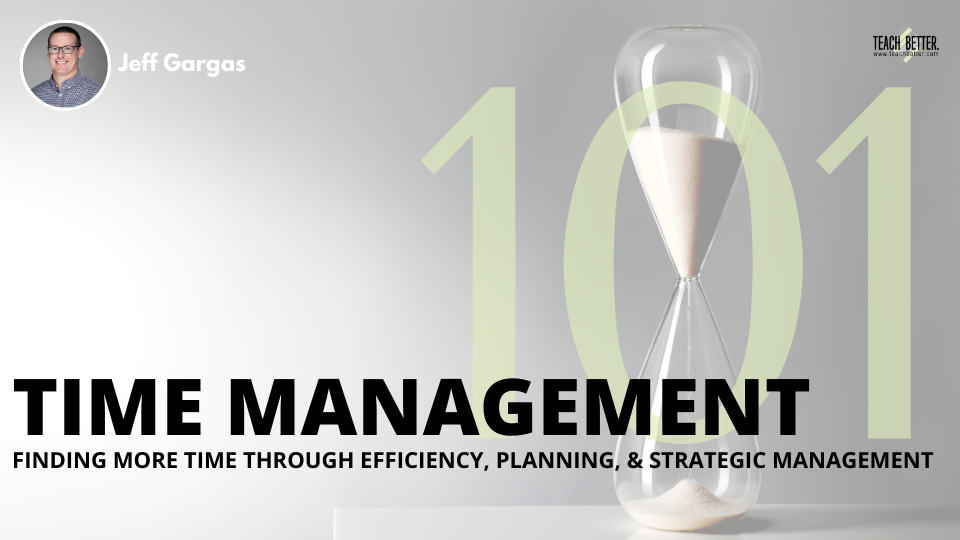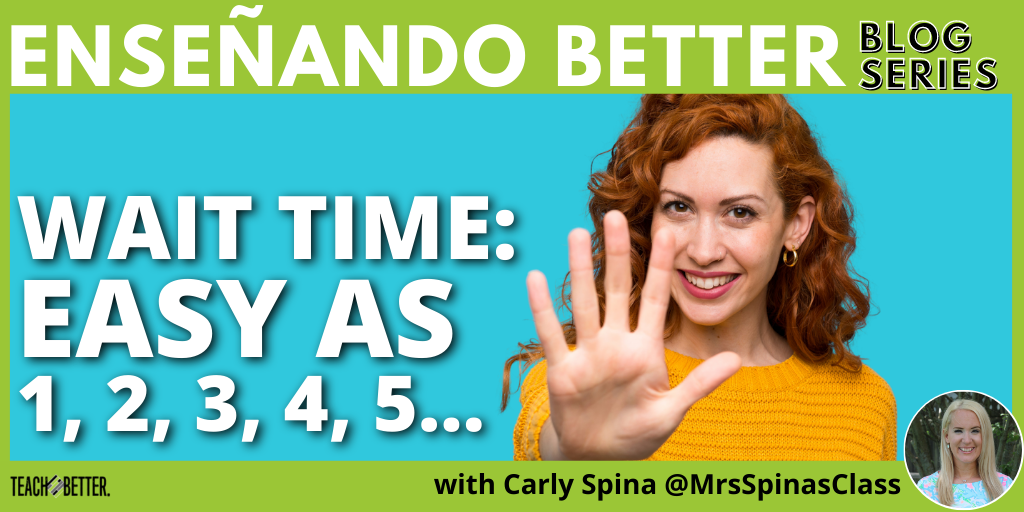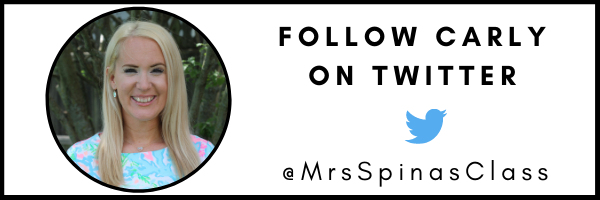TL;DR:
- Teachers often feel rushed to get through lessons within a specific time frame.
- We need to model slowing down for our students.
- There is loads of activity going on in a child’s brain at any given time.
- Announce that you’ll give students wait time.
- Take sips of water or use another prop to help you slow down during a lesson.
- Make sure you don’t speak longer than the ages of the students in your room—6 minutes for 6-year-olds, etc.
- Allow students to be active through doodling, etc. while taking notes.
Do you feel rushed?
As educators, we know how important it is to give students time to think, plan, and process. However, we constantly feel rushed. Our plates are full, our minds are always racing, and we make thousands of decisions all day long. We have a lot of content to cover in a short amount of time! We have to-do lists a mile long and…WAIT! Freeze. Let’s slow down.
Model Slowing Down
One of the best gifts we can give students is the chance to breathe, think, process, and plan. When the adults around them are constantly going 97 miles per minute, we have to be really intentional with how we teach (explicitly) and model (indirectly) what it means to slow down.
In the multilingual world, we often refer to the four domains of language: reading, writing, listening, and speaking. We name reading & writing literacy, listening & speaking oracy, speaking and writing expressive skills, and reading and listening interpretive skills. No matter how we break apart, pair, and categorize our language skills, one thing remains—wait time is essential, any way you slice it!
One of the best gifts we can give students is the chance to breathe, think, process, and plan. Click To TweetBrains are Active Places
When students are listening or reading new input, their brains are doing a lot of work. They are sorting information in their minds (Is this relevant? Does this connect to anything I know? Do I need this information right now?). They are also processing the information (Does this make sense? How does this connect to other things I know?). Many times, multilingual students are interpreting the message (This English word sounds like this Spanish word—do they mean the same thing?). WOW! There’s a lot happening as students are listening and reading.
When students are gearing up to speak or write, their brains are also quite busy. They are engaging with and connecting words, phrases, and sentences related to the content. They are testing out new language patterns, grammatical sequences, and verb conjugations. And they are forming language for a specific purpose and audience in mind. That’s enough to take your breath away!
[scroll down to keep reading]
Learning Takes Time
Learning language skills takes time, so we need to be intentional about it. Using wait time can be a challenge, especially as our brains are moving so fast—it’s hard to keep up.
Here are some tips and tricks for being more intentional with wait time.
- After posing a question, announce that you are waiting: “I’m not going to call on anyone for 30 seconds. Please do not raise your hands. I just want you to think right now.” If you teach younger students, you may even wish to close or cover your eyes to avoid making eye contact with eager kids who will wave their hands on the room in an effort to be called on after the 30 seconds are up! Hold yourself accountable by using a timer (or even ask a student leader to push the timer button for you).
- Grab a prop: Hold a water bottle in your hand. Take sips throughout your lesson. That pause can be a great moment for students to stop, process, interpret, plan, and think.
- Follow the 15-minute rule: Dr. Ivannia Soto tells us that students can only listen as long as their age. For middle school and secondary students, she recommends a 15-minute rule. Teachers should speak for no longer than 15 consecutive minutes before providing students with a chance to speak (with a peer, a group, or even to themselves!).
- Engage students with multiple ways to process information: encourage students to sketch, draw, doodle, or write as they listen, read, write, or speak.
- Provide language banks: using a word bank is great for all students. You may even wish to use a tech tool like Answer Garden so that students can contribute to a prompt or question anonymously. Keep the answers up on the screen. This now becomes a student-generated, instant word bank! These word choices can serve as a bank of ideas to help as they continue learning the content through reading, writing, listening, and speaking.
Reflection
As students are engaging with new language and new content, it is important that we are intentional about slowing down and providing space for students to process both content and language.
References:
SOTO, IVANNIA. Shadowing Multilingual Learners. SAGE PUBLICATIONS LTD, 2021.
About Carly Spina
Carly Spina has 15 years of experience in Multilingual Education, including her service as an EL teacher, a third-grade bilingual classroom teacher, and a district-wide EL/Bilingual/Dual Language Instructional Coach. She is currently serving educators and leaders across the state of Illinois in her role as an Education Specialist for the Illinois Resource Center. Spina has engaged in the successful co-creation of several parent outreach programs, tutoring programs for students in grades 3-5, mentoring programs for middle school students, co-teaching initiatives, and more. She is deeply passionate about equity and advocacy for multilingual learners and fights for access and inclusive opportunities for kids and families.
Spina actively fights against food insecurity in her community. She enjoys speaking at various national conferences and events and has received several awards over the years, including the Illinois Education Association Reg Weaver Human & Civil Rights Award in 2015 and the Distinguished Service Award for Excellence in the Team Category for EL Community Engagement in 2019. She was the WIDA Featured Educator in April 2019 and was named a Paul Harris Fellow in July of 2019. Spina is an active member of the EL/Bilingual community on social media and enjoys networking and growing with teachers and leaders across the country. She is currently working on her first book with EduMatch Publishing.



